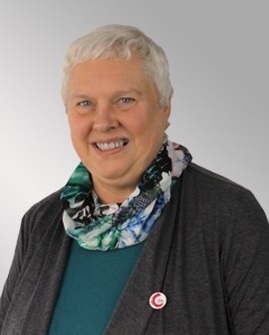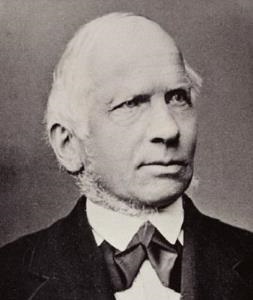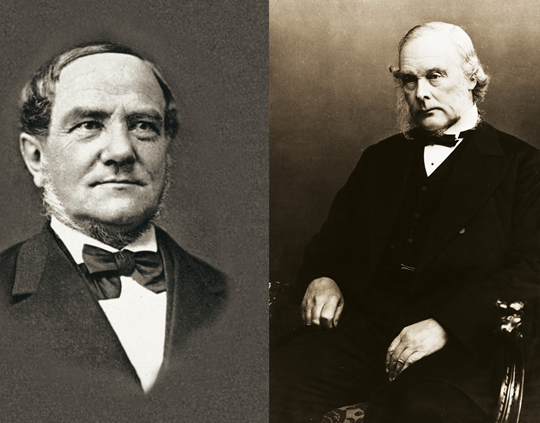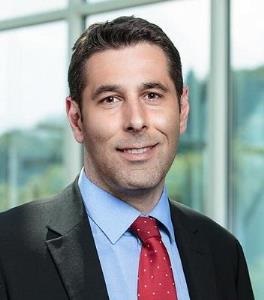At the HART of who we are lies an independent son and an entrepreneurial nurse. Together, they symbolise how we approach wound management, partnership, and the development of long-lasting solutions to improve patient care.

They say it´s lonely at the top. But for industry leaders, innovators, and trailblazers, it can be even lonelier at the bottom.
Veronika Gerber, CEO of Initiative Chronische Wunde e.V. (ICW) knows this first hand.
Veronika, a certified paediatric nurse, received her official training at the University Clinic of Dusseldorf in 1976 and made a startling discovery as a young healthcare professional.
“I worked in many hospitals in Germany when I was starting out, and it became clear to me that there was nothing on the subject of chronic wounds,” said Veronika. “By the end of the 1980s there were, what I would call, the first ‘innovative’ wound products on the market. But back then, I had to find the instructions myself, teach myself, and then teach my trainees.”
But over the course of a decade, gaining experience in different hospitals, Veronika made a name for herself.
“In the 1990s, I went to the north of Germany. There, they had no knowledge, at all, about suitable possible uses of modern wound products. I had to set everything up from scratch …again.”
As a nursing director in Aurich, Veronika oversaw all products for the entire clinic. That was when she began building her own legacy.
“Basically, I had to develop my own approach to wound care,” she said. “I went to each patient, and then instructed the staff on-site on the use of the product. It took nearly another eight years until the same wound management procedure was in place throughout the hospital."
Veronika Gerber, CEO of Initiative Chronische Wunde e.V. (ICW) knows this first hand.
Veronika, a certified paediatric nurse, received her official training at the University Clinic of Dusseldorf in 1976 and made a startling discovery as a young healthcare professional.
“I worked in many hospitals in Germany when I was starting out, and it became clear to me that there was nothing on the subject of chronic wounds,” said Veronika. “By the end of the 1980s there were, what I would call, the first ‘innovative’ wound products on the market. But back then, I had to find the instructions myself, teach myself, and then teach my trainees.”
But over the course of a decade, gaining experience in different hospitals, Veronika made a name for herself.
“In the 1990s, I went to the north of Germany. There, they had no knowledge, at all, about suitable possible uses of modern wound products. I had to set everything up from scratch …again.”
As a nursing director in Aurich, Veronika oversaw all products for the entire clinic. That was when she began building her own legacy.
“Basically, I had to develop my own approach to wound care,” she said. “I went to each patient, and then instructed the staff on-site on the use of the product. It took nearly another eight years until the same wound management procedure was in place throughout the hospital."

Now, nearly two decades later, Veronika is CEO of ICW. The ICW is a German wound healing society with more than 4,000 members and 40 regional working groups across all federal states. It is home to 150 training providers.
Its purpose is to promote modern wound healing through knowledge-sharing, inter-professionalism, and partnership.
A partnership in which the HARTMANN Division of Wound Management is an active player; supporting the training and development of wound experts on an international level, for instance the exchange between Chinese and German wound care professionals.
HARTMANN Wound Management now promotes the exchange and education of healthcare professionals through LINK® -- the division’s official professional development network with several tens of thousands of healthcare experts across 93 countries.
Its purpose is to promote modern wound healing through knowledge-sharing, inter-professionalism, and partnership.
A partnership in which the HARTMANN Division of Wound Management is an active player; supporting the training and development of wound experts on an international level, for instance the exchange between Chinese and German wound care professionals.
HARTMANN Wound Management now promotes the exchange and education of healthcare professionals through LINK® -- the division’s official professional development network with several tens of thousands of healthcare experts across 93 countries.
A legacy begins

Just like Veronika, Paul Hartmann Sr. had a willingness to try something new. He bet on new ideas and an approach to innovation that had yet to be tested. Paul Hartmann Sr. would be proud. He too, set his own path.
Paul Hartman Sr.’s passion for discovery fuelled the decision to defy his father’s wishes to continue the family’s cotton mill established in 1818.
He teamed up with Professor Victor von Bruns. Von Bruns discovered a method that could remove grease from cotton and allow materials to absorb significantly higher volumes of liquid. His findings would enable HARTMANN to take its first step in the industrial production of cotton wool dressings in 1873.

One year later, he joined forces with British surgeon Sir Joseph Lister. Lister was eager to find a solution to stop wounds from becoming infected by dangerous airborne microorganisms. And while Lister’s ingenuity was rejected in own country, Hartmann recognised his inventiveness. Lister’s discovery that carbolic acid was an effective disinfectant method would lay the foundation for HARTMANN’s Division of Wound Management. The first antiseptic wound dressing was born.
“This is what we mean when we say partnership is in our DNA,” said Peter Schuck, vice president of global sales and marketing for HARTMANN Wound Management. “Hartmann, Lister, and von Bruns tell our story. A legacy born out of boldness, and a willingness to go beyond a product, and join forces with the right minds to find the right solutions.”
“This is what we mean when we say partnership is in our DNA,” said Peter Schuck, vice president of global sales and marketing for HARTMANN Wound Management. “Hartmann, Lister, and von Bruns tell our story. A legacy born out of boldness, and a willingness to go beyond a product, and join forces with the right minds to find the right solutions.”
Lasting legacy. Simple solutions.

“An estimated 18 million patients worldwide suffer from chronic wounds,” said Peter. “Dwindling hospital staff and shrinking budgets only add to the pressure when today’s doctors and nurses are expected to treat wounds faster, better, and at a low cost.”
According to Peter, wound management requires healthcare systems to stock up on a variety of products, causing significant burden in terms of both training and cost. In addition, rising rates of chronic conditions and aging populations only add to the growing demands of wound care.
Rather than being enticed by whatever new technology becomes available in the industry, in 2013 HARTMANN prioritised. It focused its energy on the development of only two wound dressings. Together, HydroClean plus and HydroTac treat the majority of chronic wounds. They can be used by specialists, generalists, or assistants and cut costs due to less time and less dressing changes.
“More than 100 years later, our objective is simple really: enable the progression of complete wound healing that our patients deserve,” said Peter. “Approval ratings for the range tells us we are on the right path.”
According to Peter, wound management requires healthcare systems to stock up on a variety of products, causing significant burden in terms of both training and cost. In addition, rising rates of chronic conditions and aging populations only add to the growing demands of wound care.
Rather than being enticed by whatever new technology becomes available in the industry, in 2013 HARTMANN prioritised. It focused its energy on the development of only two wound dressings. Together, HydroClean plus and HydroTac treat the majority of chronic wounds. They can be used by specialists, generalists, or assistants and cut costs due to less time and less dressing changes.
“More than 100 years later, our objective is simple really: enable the progression of complete wound healing that our patients deserve,” said Peter. “Approval ratings for the range tells us we are on the right path.”
